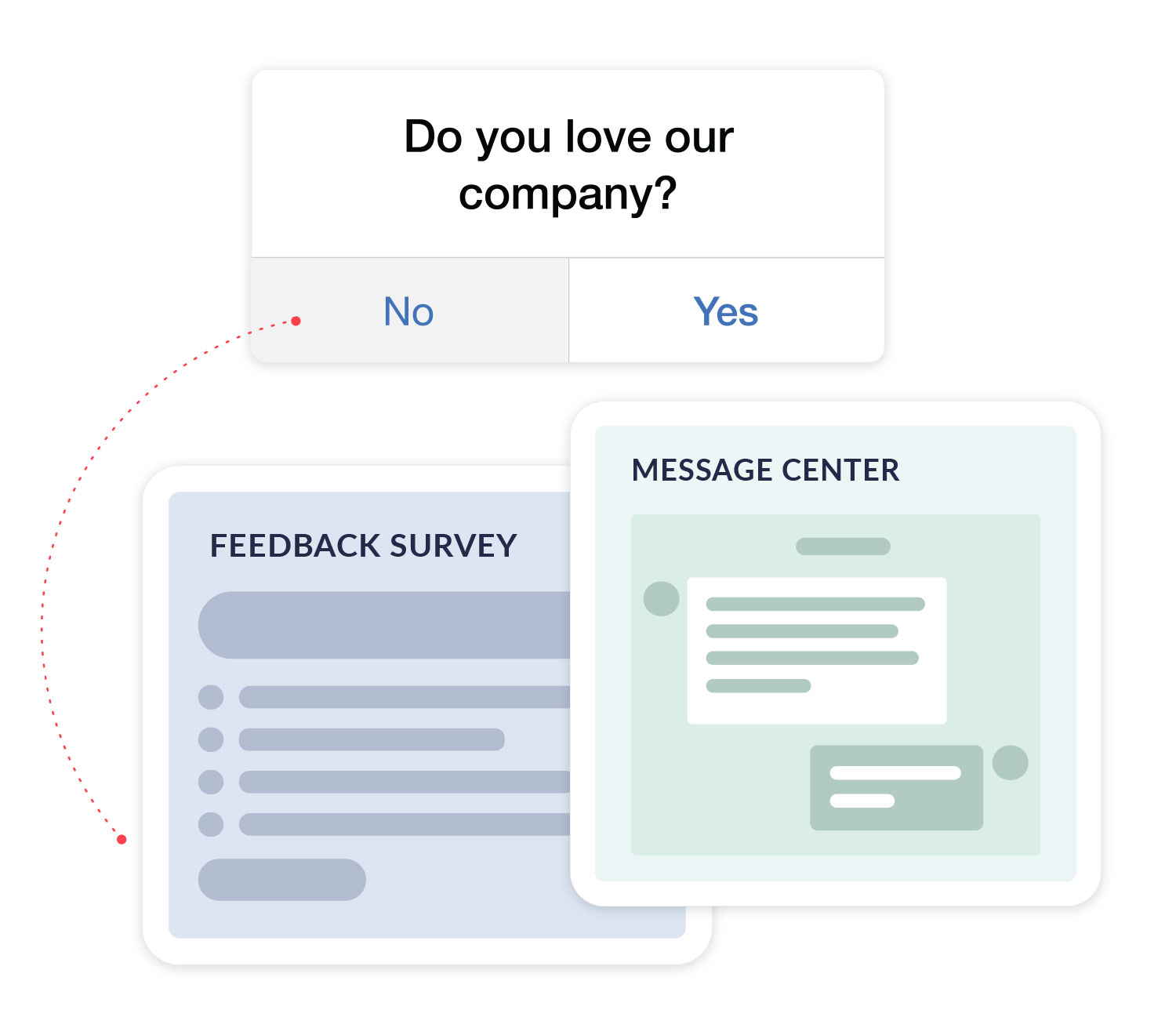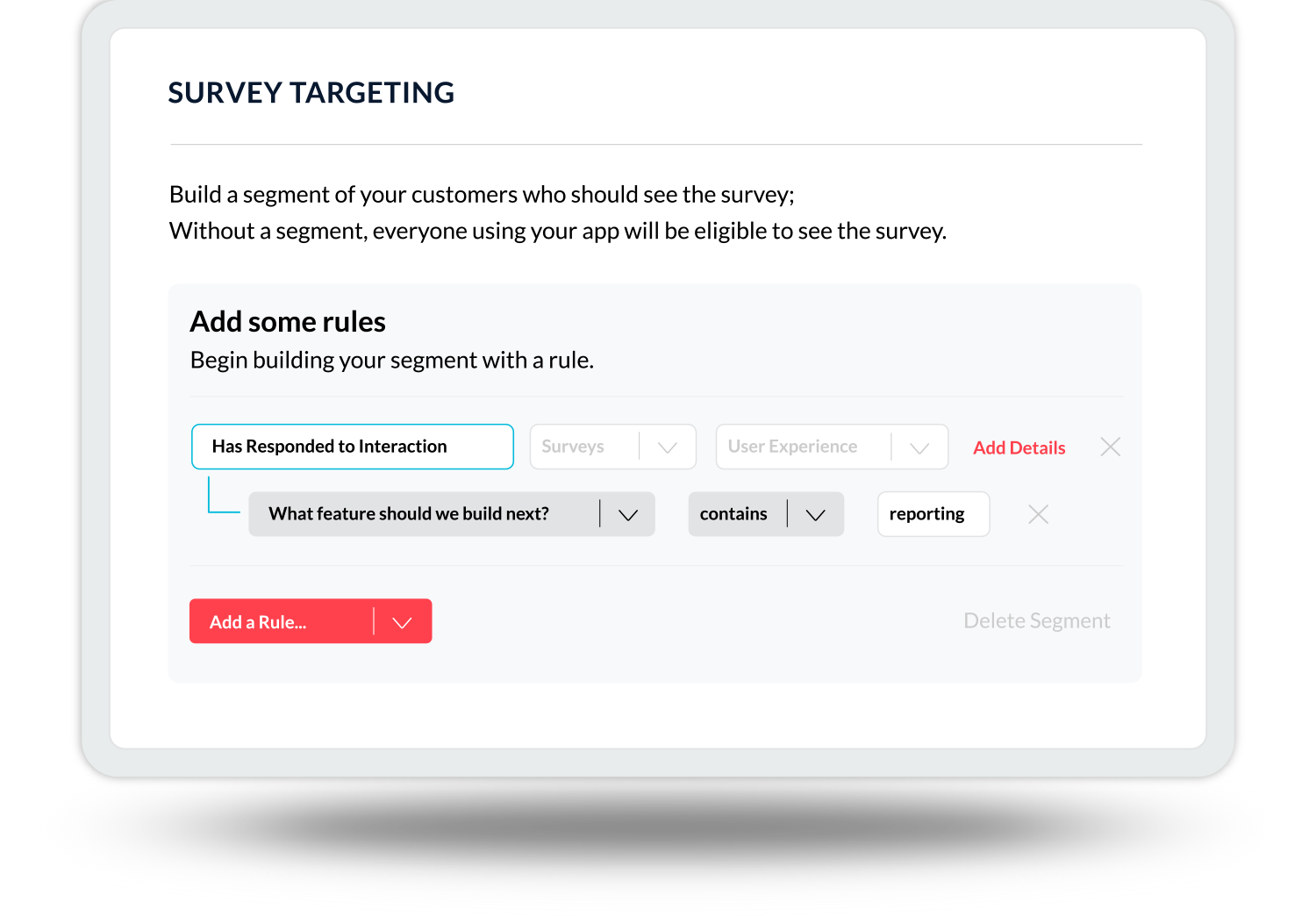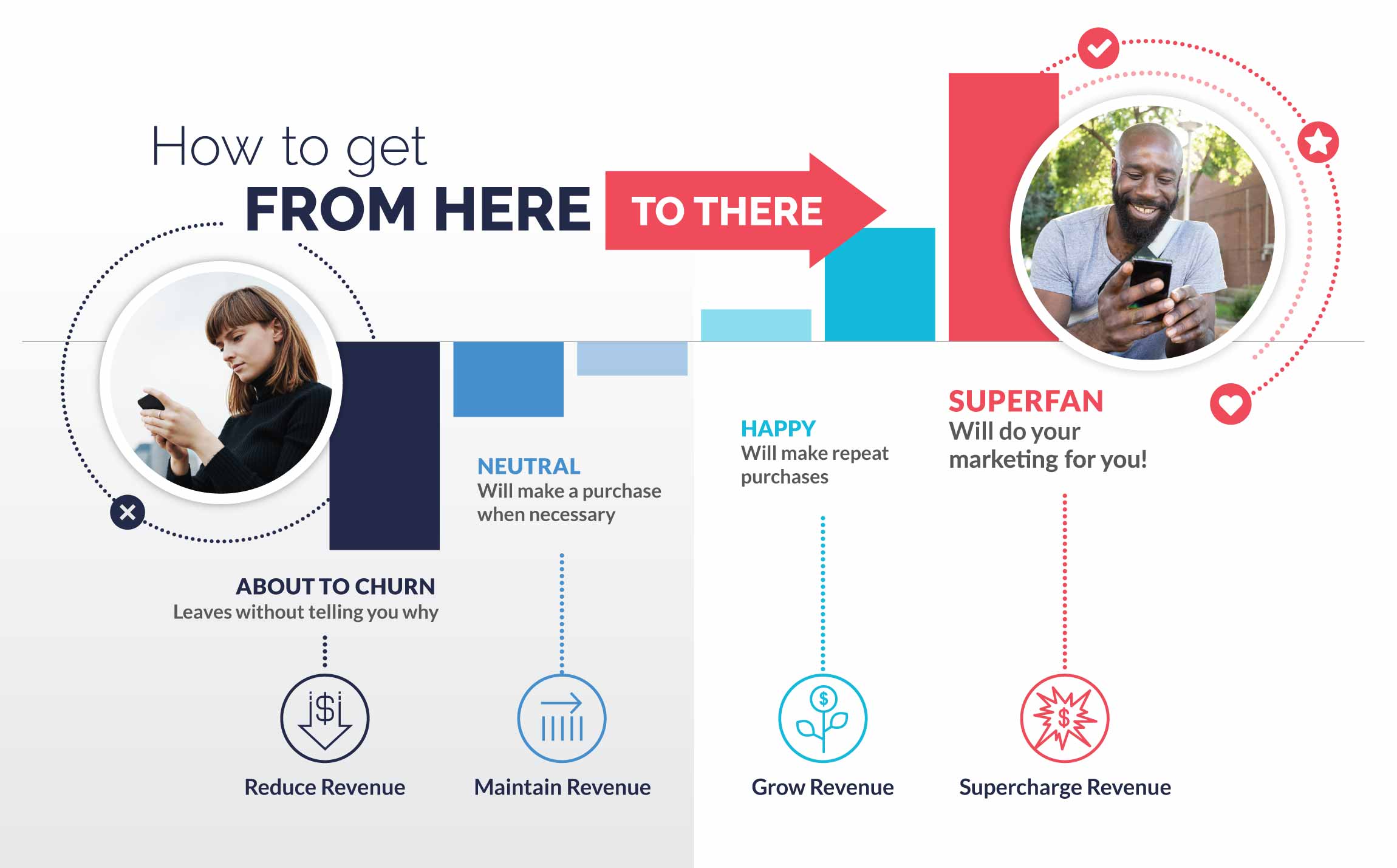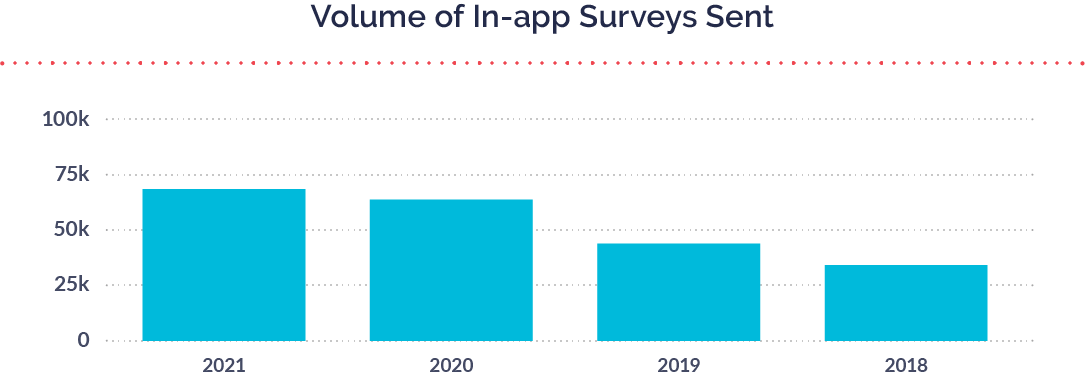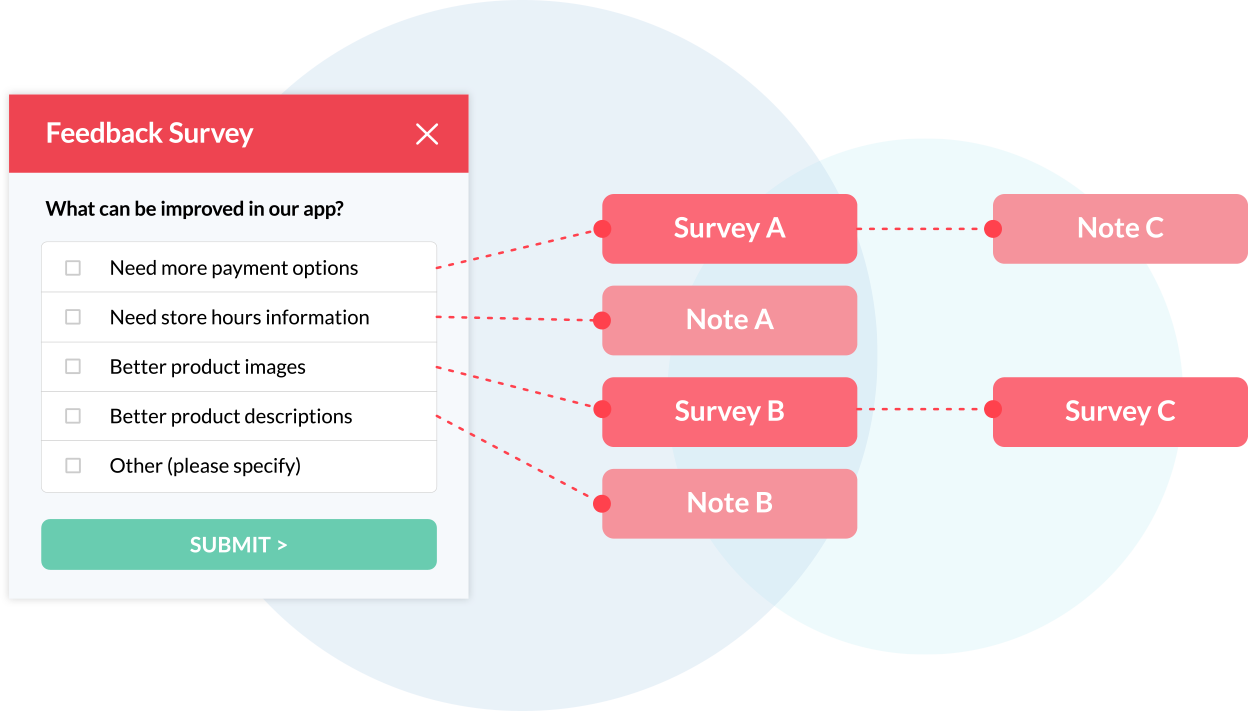Have you ever been looking for a recipe online but had to scroll all the way through a long, drawn-out story about the author’s family to get to the actual recipe? We won’t do that to you today. Instead, let’s cut right to the chase: Retargeting the right customers at the right time and in the right place is the key to driving mobile customer engagement.
Now, it might sound like common sense to say, “just retarget your customers to boost engagement,” but let’s break down what this actually means. The concept of retargeting mobile customers is not a new idea by any means, but few brands practice it successfully.
We’re going to walk you through three specific ways to effectively and efficiently retarget customers to boost mobile app engagement.
- Retarget using demographic factors such as age, gender, location, etc.
- Retarget using behavior and mobile customer engagement history
- Retarget based on shifts in sentiment
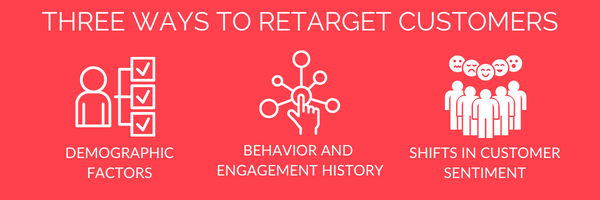
Then show the importance of targeting your customers with mobile surveys and provide tips on how to effectively use them to drive mobile customer engagement and feedback.
Let’s jump right in.
Three retargeting methods to boost customer engagement
1. Demographic factors
To start segmenting on demographic data, you’ll need a system and CRM to collect this information.
Here are examples of a few demographic data categories:
- Age
- Gender
- Location
- Nationality
Next, in order to engage these segments effectively, find out how they’re spending their time online. This takes some basic research but tools like Statista can help you quickly gather high-level data. Of course, there are exceptions to every rule, but these generalizations are a great starting point to make informed decisions.
If you work in mobile marketing or advertising, demographic information is critically important. You can create hyper-specific and personalized in-app ads that speak directly to the interests of your target demographic.
Truly powerful mobile customer engagement comes from hyper-specific brand interactions. The secret sauce here is not just targeting your ads or you’re messaging toward one demographic at a time but finding ways to target even smaller combinations.
For example, young Hispanic adult women who live in California have different interests, behaviors, and buying habits than white elderly men who live in Maine.
The more personalized and specific you can get with your outreach, the higher your mobile customer engagement will be.
2. Past behaviors and mobile customer engagement history
You don’t want to reach out to first-time customers and dedicated loyalty-club members in the same way. Communicating with both through the same message does neither group any good.
Instead, split your customer base into different sections based on past behavior like these:
- One-time buyers, who purchased something once and haven’t returned
- Seasonal buyers, like those you see every holiday season and then not again until next year
- Semi-regular buyers, who appear every two or three months
- Dedicated customers, who are the backbone of your customer base
These groups all respond better to different engagement strategies, so you’ll have more success after splitting them up. You don’t have the same goals for all of these different groups, so why would your engagement strategy be the same?
When you segment by your consumers’ previous histories of engagement, you can more effectively inspire mobile engagement and increase customer retention.
3. Shifts in sentiment
Customer sentiment is the emotion behind customer engagement. When you monitor sentiment, you try to measure the tone, context, and feeling from customer actions. Whether a customer completes a purchase, leaves a review, or mentions your company, there’s always an emotion connected.
In short, tracking customer sentiment helps you understand three major metrics: Overall customer satisfaction, loyalty, and engagement intent. The more you know about a customer’s current emotional state, the more you can tailor your marketing campaigns to provide an engaging, helpful experience. This will also adjust your product roadmap to meet customer needs faster.
Customer sentiment analysis gives you insight for your mobile marketing and product strategy. Helping your dollars stretch further and your ROI increase.
- Identifying and utilizing your fans (directing them to leave reviews, encouraging them to share on social media, etc.)
- Winning back unhappy customers (closing the loop on their negative feedback, following up with them via one-to-one messaging, offering them exclusive discounts if they stay, etc.)
- Creating more fans by targeting neutral customers (offering them special discounts, driving them towards more engaging experiences, etc.)
But the magic happens when you track these data points over time. Tracking sentiment over time allows you to identify and act on shifts in sentiment. In other words, you can understand why certain people feel the way they do about your brand, and therefore take action to win them back.
At Alchemer Digital, we have Fan Signals™. This looks at expressed sentiment based on mobile actions and feedback. In measuring expressed sentiment, we segment customers into four categories:
- Fans Shifted to Risks: Customers whose expressed emotion has shifted from positive to negative, or from Fan to Risk.
- Risks Shifted to Fans: Customers whose expressed emotion has shifted from negative to positive, or from Risk to Fan.
- New or Repeat Fans: Customers who have expressed positive emotion for the first time by answering “Yes,” or who have expressed positive emotion at least twice in a row.
- New or Repeat Risks: Customers who have expressed negative emotion for the first time by answering “No,” or who have expressed negative emotion at least twice in a row.
Now, just imagine the incredible power you’d have if you could retarget customers based on these shifts. The opportunities to drive revenue and increase mobile customer engagement are endless.
The connection between retargeting and mobile surveys
One of the best ways to retarget your customers is with mobile surveys. Proven mobile surveys drive higher response rates and increase customer engagement. Let’s dive into mobile surveys further:
Why you should use mobile surveys
There was a 9% increase in the number of surveys sent in 2021 from 2020. Brands are talking to more consumers and are more comfortable engaging with them over longer periods of time. Especially when we tell consumers we heard their voices, closing feedback loops becomes more effective. Over the past four years, we’ve seen the volume of in-app surveys grow rapidly.
The more consumers you hear from, the more holistic your feedback will be.
On average, most brands only hear from less than 1% of their customers surveyed. Our research shows the average response rate for in-app surveys was 13%. While 2021’s response rates were slightly lower than in 2020 (16%), they’re an off-the-charts comparison to the industry standard of 1%.
The more consumers you hear from, the more holistic your feedback will be.
Here a quick summary of why you should use specifically mobile surveys:
Higher response rates and engagement: You can get higher response rates than traditional feedback channels like email. Our customers achieve high response rates for in-app surveys by setting events to trigger a survey at the most opportune times. This reduces friction in the customer journey because you’re removing steps they have to take to give you feedback such as replying to a long, irrelevant email survey. Asking questions at the right time and place to the right people will help you gather far more feedback.
- Real-time feedback: With in-app surveys, you can reach customers in real-time when the experience is still fresh. It’s the perfect time to take advantage of that captive audience within the mobile app experience.
- Wide reach: Surveying customers won’t impact your business if you only hear from a small percentage of them—or just the unhappy ones. In-app survey tools like Alchemer Digital allow you to proactively hear from up to 90 percent of your consumers.
- Location-specific feedback:We know that the customer experience can vary from location to location. Especially now with how quickly the world is changing around us. It is important to be able to identify gaps in the customer experience down to the individual ID. When you can quickly identify and analyze issues by passing through custom information like this, you will ultimately save valuable time and resources.
How to create mobile surveys
Whether you are a seasoned survey writer or are surveying your customers for the first time, writing effective surveys for mobile devices can be challenging. To ensure the survey is successful, the first question to ask yourself is, “Why am I writing this survey?” Understanding the goal of the survey will help you write effective, concise, and goal-oriented questions. This will benefit both you and your customers
Nobody likes taking a long survey—especially on a mobile device. That means all of your questions need to be extremely relevant. Keeping surveys short and simple makes it easier to analyze data and make informed decisions.
There may be many questions you want to ask your customers, but focusing on a specific goal will ultimately get you better data. Keep your surveys targeted on a certain feature or event.
When to use mobile surveys
There are many great ways to use surveys to better understand your customers. Here are some examples of how surveys can drive your business and product plan forward:
- Product feedback: You want to know what your customers thought about a recently released feature or want them to share their thoughts about new features.
- Customer research: You’d like to better understand the demographic of customers who continue to use your app 20, 30, or even 40+ times.
- Investigating issues: If you notice abnormal customer behavior or a lot of bug reports, you can deploy a survey to understand exactly what’s going wrong in the customer journey.
- Customer satisfaction:If you’re proactively deploying surveys and requesting feedback, you can hopefully course-correct before unhappy customers leave. However, surveys can also help understand why customers are happy or make repeat purchases.
Conclusion
No matter your business model, industry, or company size, the key to driving mobile customer engagement is to target the right people at the right time and in the right place. And no, simply targeting customers in your app rather than on the web isn’t enough of a strategy. Your targeting, specifically with mobile surveys, can be so much more sophisticated and effective with minimal effort or extra resources.
Want to keep reading? Here are some additional resources to check out:
- Alchemer Digital: Learn how Alchemer Digital drives omni-channel customer engagement across digital properties.
- Customer Stories: See how customers have used Alchemer to elevate their customer feedback programs and do more with feedback.
- Customer Feedback in the Digital Era: Read our e-guide on the importance of customer feedback amid Digital Transformation.

